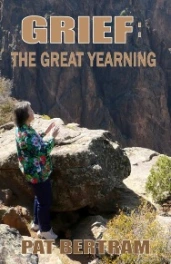 Light Bringer is being touted as science fiction, and I am exploiting that by guest blogging at a science fiction blog, Grasping for the Wind, but the truth is, my new novel is just as much history (or alternate history, if you believe what you were taught) as it is science fiction.
Light Bringer is being touted as science fiction, and I am exploiting that by guest blogging at a science fiction blog, Grasping for the Wind, but the truth is, my new novel is just as much history (or alternate history, if you believe what you were taught) as it is science fiction.
Light Bringer includes a couple of scenes where a group of conspiracy theorists argue about who is really orchestrating world events, who the secret leader(s) is/are, and how far back that secret leadership extends. The story hints that this so-called conspiracy can be traced to our very roots as humans. If one follows the trail of secrecy to ancient history, especially the history we call myth, this “leadership” takes on the appearance of science fiction. But is Light Bringer science? Or myth? Or history?
Midst my characters who might or might not be fully human, midst all the technological talk of UFOs and IFO (identified flying objects), midst talk of additional planets in our solar system and of the origins of human life, are passages of history, such as this excerpt culled from a meeting of my conspiracy buffs:
“Emery,” Rena said, “what did Scott mean earlier about the truth setting you free?”
Brian, Faye, and Scott groaned.
Rena frowned. “What? What did I say?”
Brian smiled at her, as he had been doing most of the evening. “Nothing. It’s just that any mention of it sets Emery off, and we’ve heard the lecture a thousand times.”
“I don’t lecture,” Emery said loftily.
Hoots of laughter greeted the remark.
Rena turned to Philip. “Do you know what Scott meant about the truth setting Emery free?”
Philip nodded. “He used to be an American History professor, but they fired him for teaching the whole truth instead of sticking to the text book.”
“I don’t get it. Isn’t history about truth?”
Realizing that all eyes were focused on him, Philip squirmed in his seat. “It should be, but it isn’t. For example, Emery taught that states’ rights was the main issue of the Civil War, and that’s frowned on in today’s political climate.”
Fatigue etched Emery’s face. “They accused me of being a racist because I said Lincoln used slavery as a tool to get people to fight an unpopular war, and they called me a conspiracy theorist because I taught that the war extended beyond our borders—part of a world-wide pattern.
“Modern education consists of subject matter broken into small and separate units of study to keep the students from seeing the big picture, and I didn’t agree with that. The sweep of history can only be seen if you’re looking at the big picture.
“In a single decade, 1861 to 1871, the serfs were emancipated in Russia, Italy was unified, Canada was unified, the German Empire was proclaimed, the Austria-Hungary Dual Monarchy was established, Thailand was reorganized, the Meiji Restoration in Japan gave power to a western oligarchy, and Das Kapital, a philosophy for the New World Order, was published. Global movements of such magnitude do not rise independently of one another. Someone, or a group of someones, rebuilt Europe along with large chunks of the rest of the world.
“Against this panorama of history, you can see the truth about the American Civil War. It was all about states’ rights. Were we to remain a federation of powerful independent states loosely unified by a weak federal government as was originally intended, or were we to become a nation of weak states dependant on and subservient to a strong central government that could be more easily controlled by the international power elite?
“The irony is that by doing whatever necessary to keep the states unified, Lincoln managed to destroy the very nation he tried to preserve.”
The above is a simplistic explantion, of course, since a discussion about legal plunder didn’t really fit in this novel. According to G. Edward Griffin in The Creature from Jekyll Island, Northern politicians had passed protective legislation putting import duties on industrial products, forcing the south to buy from the north at higher prices than they were paying to their European sources. Europe retaliated by curtailing the purchase of American cotten. That hurt the south even more, and they wanted out. Moreover, a divided USA would be susceptible to European expansion. Says Griffin, “The issue of slavery was but a ploy. America had become the target in a ruthless game of world economics and politics.”
Myth? Or history? Does it matter? You already know what you think, and what I think doesn’t make a bit of difference.










 Light Bringer: Becka Johnson had been abandoned on the doorstep of a remote cabin in Chalcedony, Colorado when she was a baby. Now, thirty-seven years later, she has returned to Chalcedony to discover her identity, but she only finds more questions. Who has been looking for her all those years? Why are those same people interested in fellow newcomer Philip Hansen? Who is Philip, and why does her body sing in harmony with his? And what do either of them have to do with a shadow corporation that once operated a secret underground installation in the area?
Light Bringer: Becka Johnson had been abandoned on the doorstep of a remote cabin in Chalcedony, Colorado when she was a baby. Now, thirty-seven years later, she has returned to Chalcedony to discover her identity, but she only finds more questions. Who has been looking for her all those years? Why are those same people interested in fellow newcomer Philip Hansen? Who is Philip, and why does her body sing in harmony with his? And what do either of them have to do with a shadow corporation that once operated a secret underground installation in the area?









